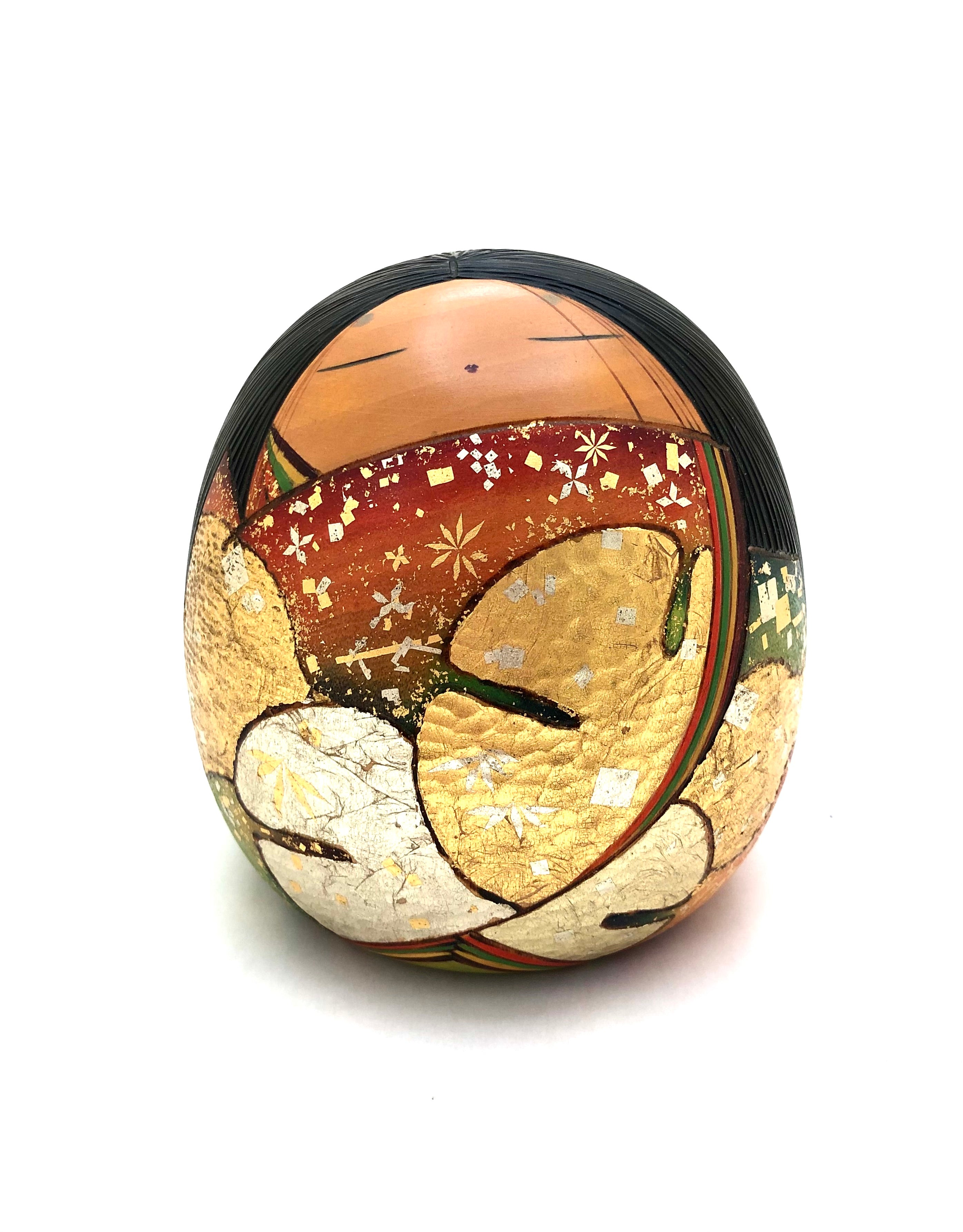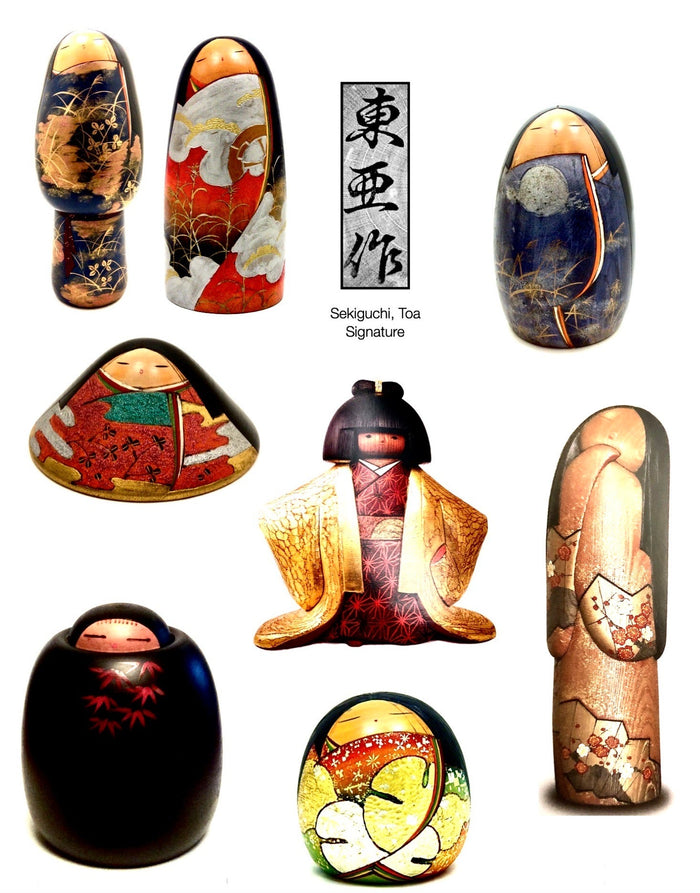



Vintage Japanese Sosaku Kokeshi by Sekiguchi, Toa
Dimensions: 5-1/2”h x 5-0”dia
This doll entitled: "Haru no Hi | Spring Day" won the Prime Minister’s Award and is made of beautifully painted Mizuki, (Dogwood). The beauty portrays the story of the Japanese yearly New Year's Eve Festival with silver ginkgo leaves, celestial elements, and twinkling stars all of which are used to symbolize good luck on important occasions throughout the year. She has black and carved long hair flowing down her back emphasizing hair strands. Her eyes and horizontally elongated with a slight indication of a nose. The piece is signed and detailed on the bottom by the artist.
Condition: Excellent meaning that the piece retains its original craft/workmanship showing a wonderful-developed patina commensurate which suggests a degree of wear that corresponds to its vintage. It is void of damage, cracks, breakage, or repairs and meets all the standards of the collectible Sosaku Kokeshi.

Artisan
Woodworker: Sekiguchi, Toa
1942-
Biographical History:
Son of Sansaku, Toa was born in Shibukawa City, Gunma-ken, and still lives and works there with his family, all of whom create Sosaku Kokeshi. Winner of many awards, he received the Ministry of International Trade Industry Award in 1978-9. Since then he has won the Prime Minister’s Award, one named Kaze ni Fukarete, and two others one named Utage and a third Chikurin are marked with his script signature and the note: “Naikaku-soridaijinsho jyushu sakka”, Several others received respected commendations. Toa and his wife operate their own Kokeshi studio, where they continue to create award-winning Kokeshi.
Collector's note – descriptive qualities, standard characteristics & ornamentation styles:
Toa-san often employs beautifully painted Mizuki (Dogwood), for his pieces. We see all types of motifs used, including festival elements representing fireworks, and natural elements such as abstracted Gingko leaves, (Ginkgo trees survived the atomic bomb dropped on Hiroshima in 1945, and are considered a “bearer of hope”). We additionally see wheat, plum flowers, cloud-filled skies, and evening sunsets. Many pieces illustrate long hair executed by deep carving to define the hair strands. Toa definitely shows off his artistic, painterly abilities with beautiful creations in black, grey, vermillion, and gold.
Explore & Learn More about Woodworker: Sekiguchi, Toa